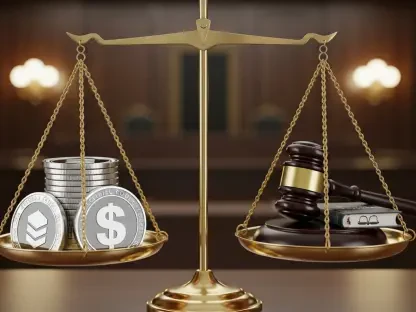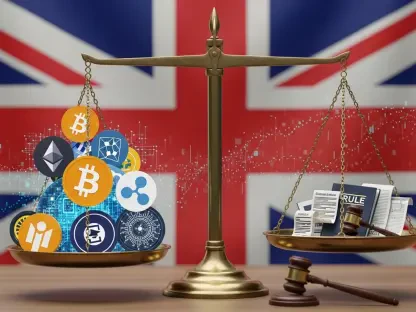As we dive into the evolving landscape of intellectual property (IP) and emerging technologies, I’m thrilled to sit down with Desiree Sainthrope, a legal expert with extensive experience in drafting and analyzing trade agreements. With a deep understanding of global compliance and a keen interest in the intersection of IP with innovations like artificial intelligence (AI), Desiree offers unique insights into how these fields are shaping the future. In this conversation, we explore the declining value of IP rights in the U.S., the role of stakeholder collaboration in creating a fair IP system, the symbiotic relationship between AI and IP rules, and the importance of trust in technology adoption, among other critical topics.
Can you explain what you’ve observed about the declining value of intellectual property rights in the U.S. over the past couple of decades?
Certainly. Over the past 20 years, the value of IP rights in the U.S. has taken a hit for several reasons. One major factor is the perception among some large tech companies that patents and copyrights are more of a hindrance than a benefit. They often see these rights as barriers to innovation rather than tools for protection. Additionally, small and medium-sized enterprises (SMEs) and independent creators struggle to generate meaningful economic returns from their IP. The costs of securing and enforcing rights can be prohibitive, and the system sometimes feels stacked against them, making it hard to compete with bigger players.
How have large tech companies specifically contributed to this decline in the value of IP rights?
Large tech companies have played a significant role by often lobbying for policies or engaging in practices that weaken IP protections. Some view patents as tools for litigation rather than innovation, leading to a push for reforms that make it harder to enforce rights or easier to challenge them. This creates an environment where IP is seen as less valuable because the protections aren’t as robust or predictable. However, it’s worth noting that not all tech giants take this stance—some, like Microsoft, still champion strong IP rights as a cornerstone of their business strategy, which can set a positive example.
What challenges do small and medium-sized enterprises and independent creators face in turning their IP into economic gains?
SMEs and independent creators often face an uphill battle. The financial burden of filing for patents or copyrights, combined with the legal costs of defending them, can be overwhelming. Unlike large corporations, they don’t have deep pockets or dedicated legal teams. Additionally, the complexity and uncertainty of the IP system can deter them from even seeking protection. If the threshold for securing rights feels too high or unclear, they may not bother—or worse, they might look to other countries with more favorable systems, where capital and innovation can flow more easily.
You’ve talked about the potential for different stakeholder groups to come together for a fairer IP system. Can you elaborate on how that could work?
Absolutely. The idea is to bring together a diverse set of voices—tech companies, SMEs, independent innovators, policymakers, and even consumer advocates—to craft an IP system that balances everyone’s needs. This isn’t just about protecting individual business interests; it’s about creating a framework that advances society as a whole. When stakeholders collaborate, they can address systemic issues like high costs or overly complex processes, ensuring that IP serves as a tool for inclusivity and progress rather than a barrier.
Who do you believe are the key stakeholders that need to be at the table for this kind of collaboration?
I think you need a broad mix. Obviously, large tech companies and industry leaders have a big role because of their influence and resources. But equally important are SMEs and independent creators, who often get overlooked despite being the backbone of innovation. Policymakers and regulators are critical for setting enforceable rules, while academic experts and consumer groups can provide outside perspectives on fairness and societal impact. Without all these voices, you risk creating a system that’s lopsided or serves only a narrow set of interests.
You’ve noted that the future of IP is tied to getting AI rules right, and vice versa. Can you unpack that relationship for us?
Sure. IP and AI are deeply intertwined because AI is both a creator and a user of IP. On one hand, AI systems generate content, inventions, and data that raise questions about ownership and protection—should an AI-generated invention be patentable, and if so, who owns it? On the other hand, AI relies on vast amounts of data, often protected by IP, so the rules governing access and use need to be clear. Getting IP rules right can foster AI innovation by providing certainty, while well-crafted AI regulations can protect IP by preventing misuse or unauthorized exploitation.
What specific IP rules do you think need to be updated or introduced to support AI development?
One area is clarifying ownership of AI-generated works. Current IP laws are built around human creators, so we need frameworks to address whether AI can be a creator or if rights should vest with the developer or user. Another issue is data rights—AI thrives on data, but much of it is copyrighted or proprietary. We need rules that balance access for innovation with protection for owners, perhaps through licensing models or fair use expansions tailored to AI training. Without these adjustments, legal uncertainty could stifle AI’s potential.
Turning to technology adoption, you’ve mentioned that innovations like AI and blockchain should be invisible to users and based on trust. What do you mean by ‘invisible,’ and why does it matter?
By ‘invisible,’ I mean that the technology should work seamlessly in the background, without users needing to understand its inner workings. Think about how we use smartphones—we don’t need to know the engineering behind them to make a call. For AI and blockchain, if the user experience is intuitive and frictionless, adoption happens naturally. It matters because complexity or distrust can slow down acceptance, and we’ve seen that with early blockchain applications where users were wary of the technical jargon or security risks.
How can trust be built in these technologies to encourage faster adoption?
Trust comes from transparency, reliability, and accountability. For AI, that means clear communication about how data is used and ensuring systems are unbiased and secure. For blockchain, it’s about demonstrating tamper-proof records and protecting user privacy. Governments and companies can help by setting standards and certifications that signal safety and integrity. When users feel confident that a technology won’t harm them or misuse their information, they’re far more likely to embrace it, speeding up its integration into everyday life.
Looking globally, you’ve highlighted how some countries are ahead in certain IP metrics. What can the U.S. learn from these examples to strengthen its position?
Some countries, like China, have surged ahead in areas like patent and trademark activity, often driven by state support and incentives for innovation. The U.S. can learn from this by fostering a more encouraging environment for IP protection—lowering barriers to entry for filings, offering financial support for SMEs, and ensuring the legal system is predictable and accessible. Leadership in IP isn’t just about quantity; it’s about creating a system that attracts global talent and capital. The U.S. needs to set the agenda by being proactive, not reactive, to global trends.
What is your forecast for the future of IP in the context of emerging technologies like AI and blockchain?
I’m cautiously optimistic. I think we’re at a pivotal moment where IP systems can either adapt to support these technologies or become roadblocks. If we get the rules right—balancing protection with innovation—I see a future where IP becomes a catalyst for breakthroughs in AI and blockchain, driving economic growth and societal benefits. But it will require global cooperation and a willingness to rethink traditional models. My hope is that over the next decade, we’ll see frameworks emerge that are flexible enough to handle rapid technological change while ensuring fairness and trust.









